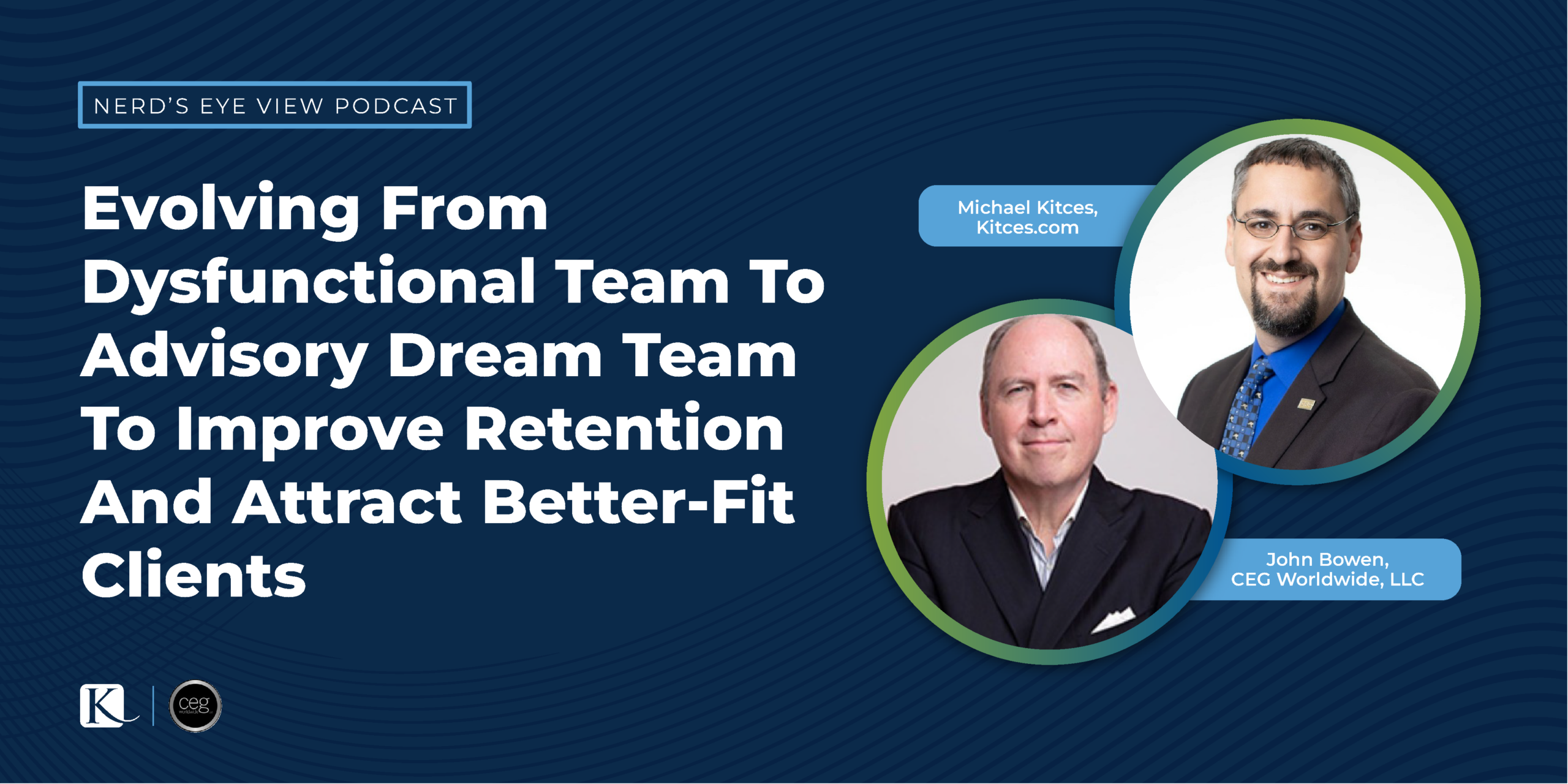Although many advisory firms start out with a single person handling all the work of advising clients, bringing in new business, and managing operations and compliance, there’s a limit to how many hours any one person can work, which also means that there’s a cap on the amount of client growth a solo advisor can achieve before running up against their capacity limit. The obvious answer to growing beyond the capacity of a single owner/advisor is to build a team of employees (either in advisory and/or other roles like client service or operations) that can accommodate additional room for growth. And yet, not all teams are created equal: While some team members complement each other well enough to facilitate more clients and revenue, others can be problematic to the extent that the firm owner has less time to advise clients because of the additional managerial burden that a poorly functioning team creates.
In this ‘hybrid’ video-based article, Michael Kitces and John Bowen, CEO and founder of CEG Worldwide and CEG Insights, dive into the data on what makes advisory teams work, how strong teams can help firms attract high-net-worth clients, and how a team-based approach – despite the higher complexity and managerial duties involved – can actually improve the wellbeing of advisors who are stressed beyond their capacity on their own.
Good teams are valuable not just from a productivity standpoint (as they allow the firm to serve more clients); they can also be an asset when it comes to developing new business and attracting high-net-worth clients. Because from the client’s perspective, a firm with multiple people working together can be reassuring; they are able to rely on faster responses, more efficient service, and someone who will be available to answer their call when the lead advisor goes on vacation.
But as the firm grows (both in terms of clients and employees), it becomes less about the number of people on the team and more about having the right people in the right roles. Because even though a firm with high revenue might be able to sustain some turnover and loss of revenue due to a team that doesn’t work well together, continuous team dysfunction can eventually compromise advisor wellbeing, which can ultimately impact capacity at the revenue level. As while any team can expand a firm’s capacity and bring in more revenue, it takes a high-functioning “Dream Team” to both expand capacity and improve everyone’s enjoyment of actually working in the business.
In many respects, the ideal team is composed of people who will self-manage themselves without requiring extra involvement from the firm owner. But it isn’t enough simply to find self-motivated people: There needs to be a clear vision for the company, communicated during the hiring process and reinforced regularly, that emphasizes not only the values and significance of the business today but also where it’s going in the future, to ensure that everyone is working towards the same goal (and to make clear the opportunities that await employees who stick around).
The key point is that advisory firms of different sizes, business models, and growth plans all encounter the same pain points that come with building a team. And even for more seasoned entrepreneurs, the challenges around building a team that can work well together never really stop – they just take on different (and often more complex) forms. Nevertheless, for advisor-owners who can communicate a clear vision of their company’s direction (and what that means for employees coming along on that journey), it’s possible to build teams that work together to grow the firm – not only in terms of clients and revenue but also in terms of happiness and wellbeing, as everyone recognizes the meaning and significance of what they’re building together!


